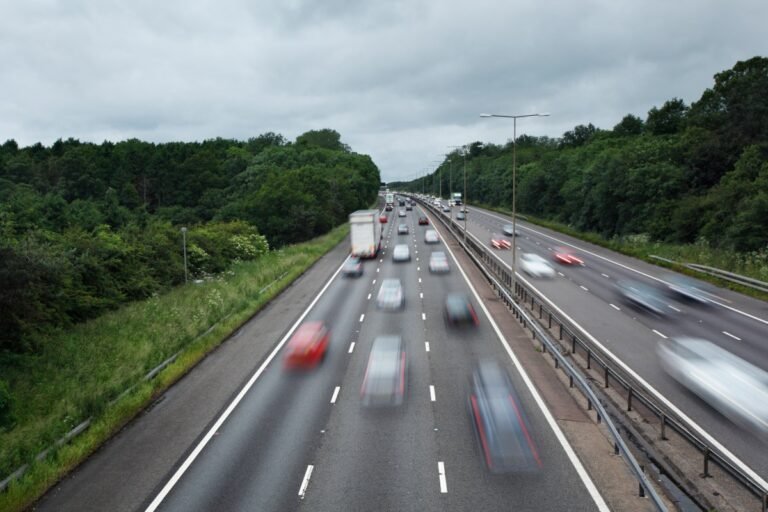On a Saturday afternoon in January 2022, a 2018 Dodge Challenger ran a stop sign in Las Vegas, accelerated to 103 miles per hour and flew through an intersection with a red light. The Dodge struck the right side of a Toyota Sienna minivan, which was carrying seven occupants, causing four other vehicles to collide. The driver and passenger of the Dodge, as well as every passenger in the minivan, died.
The National Transportation Safety Board, a US government agency that investigates such accidents, were found that in this scenario and many others like it, a technology that limits the speed of vehicles could mitigate the magnitude of this tragedy. The driver, who was found to have cocaine and PCP in his system, which impaired decision-making, had a speeding record.
The NTSB concluded that Intelligent Speed Assist (ISA) technology should be standard equipment on all new vehicles to prevent unnecessary deaths. It’s no longer enough, the agency argues, to rely on states to prevent driver speeding and recidivism. The agency, which has no rulemaking authority, is calling on the National Highway Traffic Safety Administration (NHTSA) to mandate the use of this technology going forward.
“This crash is the latest in a long line of tragedies we’ve investigated where excessive speed and impairment led to disaster, but it doesn’t have to be that way,” NTSB Chair Jennifer Homendy said. “We know that the key to saving lives is redundancy, which can protect us all from human error on our roads. What we lack is the collective will to act on NTSB safety recommendations.”
An NHTSA spokesperson told TechCrunch that the agency welcomes the NTSB’s input and is considering it carefully, especially when considering potential regulatory actions.
How does it work
ISA technology takes a car’s GPS location and matches it against a database of posted speed limits and on-board cameras to find the legal speed limit. Passive ISA systems warn the driver when the vehicle exceeds the speed limit through audible, visual or tactile alerts, leaving the driver responsible for slowing the car down. Active systems can make it difficult to increase a vehicle’s speed or even completely restrict it from traveling above a posted speed limit.
Some Americans may be troubled by the idea of an active ISA system that restricts their freedom of movement. Limiting any freedom strikes at the core of the American libertarian psyche and could be seen as government overreach. Americans often have a general distrust of government intervention and regulation, and may argue that limiting speeds is just the beginning. Some might even argue that ISA technology could prevent a quick escape during an emergency situation.
From a technology perspective, different sign designs and time of day speeds can make reliable ISA technology difficult.
That being said, it is undeniable that speeding is one of the leading causes of traffic-related deaths. According to recent NHTSA data, nearly one-third of all traffic-related deaths are the direct result of excessive speed.
Europe first
In Europe, ISA technology is already mandatory for all new vehicles from 2022, according to the European Commission General Vehicle Safety Regulation (GSR), which requires vehicles to be 90% accurate for ISA systems. The GSR also includes requirements for mandatory advanced driver assistance systems (ADAS), including automated emergency braking systems and lane keeping technology.
Volvo recently announced EX30 electric vehicle with Google Built-in it will have passive ISA technology, making it eligible for GSR certification. Google Built-in, which is also in brands like Chevrolet, Renault, Polestar and Honda, relies on Maps and not just the car’s cameras to get accurate speed limits. The Maps team analyzes traffic trends, collects local data and cross-references street view or third-party partner data, according to suspension by Siddharth Shashidharan, Google Maps product manager.
Appeal to car manufacturers
After its investigation into the Las Vegas crash, the NTSB also asked 17 automakers, including BMW, Ford, General Motors, Honda and VW, to equip new vehicles with speed assist features. The agency recommends that vehicles have at least one speed warning system, but will likely support more robust action.
The NTSB has asked NHTSA to act on the adoption of ISA technology in the past. In 2017, the agency asked NHTSA they incentivize adoption of ISA through the New Car Evaluation Program. As of February, NHTSA is currently reviewing public comments and is expected to issue a final decision on the matter in 2023.
The NTSB also recommended that NHTSA research and develop guidelines to help states implement an ISA pilot program that would limit vehicle speed for repeat offenders. New York has piloted such technology and is examining legislation.
Having a passive ISA system in vehicles seems like a no-brainer considering the amount of ADAS available in new cars today, many of which promise to drive your car for you in some cases. Legislators have also introduced, for example, legislation around driver monitoring systems, which can detect when a driver is tired, inattentive or under the influence and take action.
This story has been updated with a comment from NHTSA.
